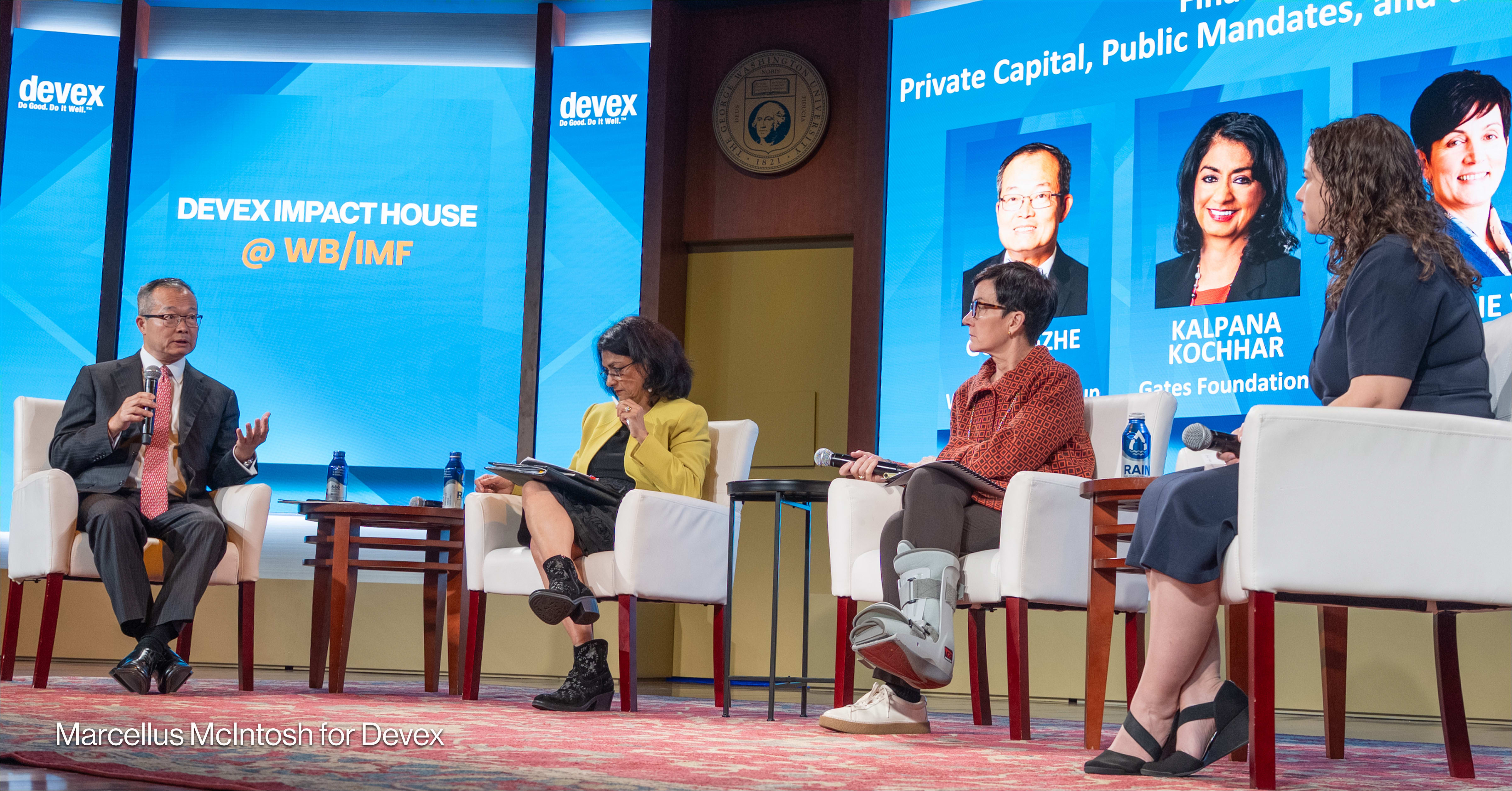
LONDON — The United Kingdom is putting £90 million ($110 million) of aid money into a little-known development finance outfit with the promise that it can unlock more than £500 million in private investment for small businesses across sub-Saharan Africa and create 50,000 jobs over 10 years — but development finance experts have questioned whether and how this can be done.
At the end of last month, Alok Sharma, secretary of state for the Department for International Development, announced a tripling of support for Financial Sector Deepening Africa Investments — the investment arm of long-running DFID-funded program FSD Africa, which works to reduce poverty by strengthening financial markets across sub-Saharan Africa.
The multimillion-pound boost will enable FSD Africa’s investment team to support burgeoning African businesses and entrepreneurs with “untested, breakthrough ideas” around increasing access to finance and basic services, while strengthening local financial markets, according to Anne-Marie Chidzero, FSD Africa Investments’ chief investment officer. The organization aims to fill a funding gap in the market by offering early-stage, high-risk, long-term capital to promising financial sector businesses that would otherwise miss out, she explained.
This article is part of the Battle for Africa series
Read more about the new donors working and investing in Africa, alongside established donors hoping to reinvigorate their partnerships with the continent — exploring investments, approaches, and motivations.
“We have a unique investment mandate to take the early-stage risk when investing in African financial intermediaries that could yield high economic and social impact but require patient capital to demonstrate commercial returns,” Chidzero said.
However, some questioned the evidence behind the agency’s ambitious mobilization and job creation targets.
“On paper this initiative is welcome because it is targeting the poorest countries. However, the leverage ratio is ambitious and … will be challenging to do. There is also the issue of the quality and distribution of the jobs created,” commented Samantha Attridge, senior research fellow at the Overseas Development Institute.
The funding package is the latest in a string of U.K. commitments aimed at boosting private sector development in Africa, which “can unlock Africa’s promise,” Sharma recently wrote.
The U.K. plans to host an African Investment Summit in January, but the trend goes back to the 2016 recapitalization of the U.K.’s development finance institution, CDC Group, which has since been tasked with investing £3.5 billion in Africa.
The model
Established in 2012, FSD Africa uses a mix of grants and technical assistance to help governments, business leaders, regulators, and policymakers address market blockages, with programs in 28 countries.
The investment arm was set up in 2017 with £30 million in seed funding from DFID to help address a key problem that FSD Africa’s finance experts were coming up against — the lack of early-stage risk capital for promising business models.
“We found many promising financial firms or funds weren’t getting off the ground because they couldn’t access risk capital. Their business strategies were risky and untested but [offered] an important opportunity to address financial market gaps. As a result, you would often see breakthrough ideas or potential models remain untested,” Chidzero said.
FSD Africa Investments is able to do smaller deal sizes than established development finance institutions, take greater risks, and accept a lower financial return.
Since its launch two years ago, the five-strong team has made five deals worth £21.25 million, with an additional £10 million worth of deals in the pipeline, according to a press release. The additional £90 million from DFID will help the investor ramp up its work.
Recent deals include a £350,000 investment in a micro-pension scheme in Ghana — the People’s Pension Trust — to help it test affordable pension schemes for low-income people or those working in the informal sector.
It also invests in funds as well as firms, with the aim of crowding in other funders. In 2017, it put £15.3 million into the African Local Currency Bond Facility, which it says has unlocked £137 million in additional finance from the private sector. By creating liquidity in the market, the bond facility aims to make it easier for companies to borrow money, and help households diversify their savings options and lower borrowing costs.
Other projects include investing in mobile money platforms as well as affordable housing.
Questions remain
However, some expressed doubts about how much impact such blended finance models really have.
Attridge, who is ODI’s blended finance expert, praised the investor’s exclusive focus on Africa — where blended finance is most needed but currently not well mobilized — and for seeking to fill a “gap in the market” for small deals since “current blended finance is not well constructed for smaller deal sizes,” she said.
However, she questioned the ability of the fund to mobilize £500 million in additional finance, implying a leverage ratio of $1 to $5.50. By comparison, CDC leverages 41 cents per $1 invested. Attridge’s research estimates that $1 of blended finance invested by development finance institutions mobilizes an average of 75 cents of private finance for lower-income countries, and only 37 cents in the lowest-income countries.
“FSD Africa Investments is targeting harder markets, higher-risk transactions and aiming for higher leverage, which will be challenging to do,” Attridge told Devex.
Ian Mitchell, senior policy fellow at the Center for Global Development in Europe, agreed the leverage targets were “very optimistic,” and warned that DFID “risks over-claiming on the potential benefits and disappointing on the actual impacts.”
“It’s vital that claims about the expected benefits or projects are well-evidenced, so that DFID can pick the best ones,” he told Devex.
However, FSD Africa Investments’ Chidzero defended the mobilization target:
“On average for every £1 we invest we can raise another £2.50 from other investors. Sometimes more and sometimes less … We take early stage risk which gives investors comfort, otherwise they may not invest in the innovative financial entity. The entity we invest in … will then be providing financing to businesses or people, further crowding in other finance,” she explained, adding that the organizations’ current investments are reporting a 1:7 leverage ratio on average.
Attridge also questioned the job creation target of 50,000, saying that “gross jobs numbers don’t give insight into tackling poverty.” It is crucial to know what kind of jobs are being created and for whom, she said. This points to a general challenge facing DFIs, who need to do a better job at understanding, articulating, and measuring the “poverty reduction pathway of their investment,” the ODI expert wrote in a recent blog.
Chidzero said the fund does not want to “create jobs for the sake of jobs,” and will therefore be tracking whether the jobs that are created, sustained, or improved pay more than the national minimum wage and 20% above average salaries. She also said that the team is developing a jobs measurement framework to ensure impact is effectively measured.
“That said, it is important to note that poverty reduction is a factor of many variables, many of which we regard to be exogenous to FSD Africa’s mandate. Job creation is an important contributor to poverty alleviation, albeit not the only necessary one,” Chidzero added.
Update, Oct. 8, 2019: This story was amended to clarify that FSD Africa was established in 2012 and has programs in 28 countries.
Read more about the U.K.'s work on private sector development in Africa:
► Inside DFID's £31M investment in the Currency Exchange Fund








